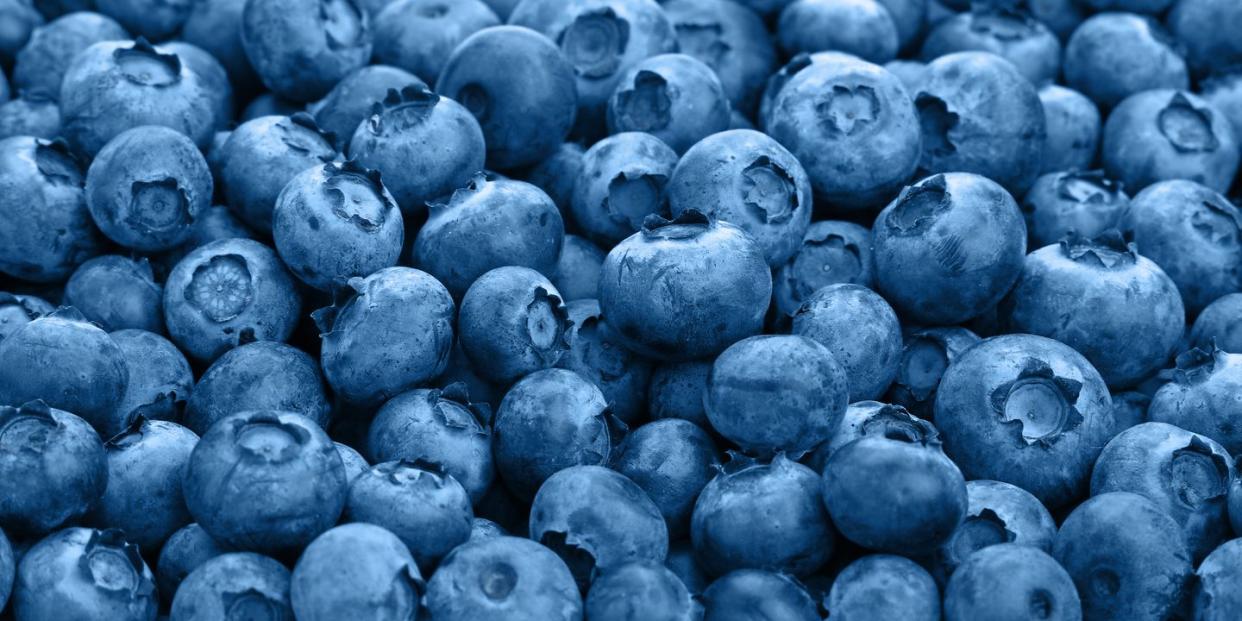FDA Recalls Dole Blueberries Due to a Possible Parasite Contamination

“Hearst Magazines and Verizon Media may earn commission or revenue on some items through the links below.”
The FDA has announced a limited recall of Dole Fresh Blueberries over concerns that some batches are contaminated with the parasite Cyclospora.
The blueberries being recalled were distributed in Illinois, Maine, New York, and Wisconsin, as well as two Canadian provinces.
Cyclospora is a microscopic parasite that causes the intestinal illness cyclosporiasis. Experts explain the symptoms you should know, plus how to reduce your risk of infection.
Got blueberries in your house? Check the label. The Food and Drug Administration (FDA) has announced a limited recall of Dole Fresh Blueberries over concerns that some batches are contaminated with the parasite Cyclospora.
The blueberries being recalled were distributed in Illinois, Maine, New York, and Wisconsin, along with two Canadian provinces. The impacted lots include 6- to 24-ounce containers that were packaged between May 28, 2021 and June 9, 2021. (You can check your UPC label online to see if it’s affected by the recall.)
No illnesses have been reported so far, and it’s not clear how the parasite may have gotten into the fruits. Still, the FDA is urging people to throw out any blueberries that qualify on the recall list. Here’s everything you need to know about the parasite behind the contamination.
What is Cyclospora, exactly?
Cyclospora is a microscopic parasite that causes the intestinal illness cyclosporiasis, according to the Centers for Disease Control and Prevention (CDC). People can become infected with Cyclospora by ingesting food or water that’s contaminated with the parasite.
How does Cyclospora spread?
People develop cyclosporiasis after eating food or water that was contaminated with poop, the CDC says. Cyclospora takes one to two weeks after being passed in a bowel movement to become infectious for another person, making it unlikely that it’s passed directly from one person to another, the CDC says.
Cyclospora can end up in food “when produce is sprayed with contaminated water,” says infectious disease expert Amesh A. Adalja, M.D., senior scholar at the Johns Hopkins Center for Health Security.
That’s not the only way it can end up in food, though. “In many cases, outbreaks may also be linked to staff hands—especially individuals who have been experiencing diarrheal illness,” says Benjamin Chapman, Ph.D., a professor and food safety specialist at North Carolina State University. Port-a-potties and issues with sewage systems have been blamed in previous outbreaks, too.
“It’s also a very seasonal pathogen—most cases are between May and August in the U.S.,” Chapman says.
Who is at risk for a Cyclospora infection?
People who live or travel in tropical or subtropical areas of the world are most at risk, according to the CDC, because cyclosporiasis is widespread in some of those areas. However, it’s still a risk to be aware of in the United States.
“[Cyclospora] is certainly not as common as norovirus, Campyobacter, Salmonella or other foodborne illness pathogens, but it is a pathogen of concern,” Chapman says, citing CDC data that show there are a few hundred cases a year on average. “We have had numerous outbreaks of Cyclospora linked to produce in recent years from basil, bagged salad, fresh vegetable trays, and clusters of unknown origins.”
What are the signs of cyclosporiasis?
Cyclospora infects the GI tract and can cause unpleasant symptoms, which can include:
watery diarrhea
frequent, sometimes explosive bowel movements
loss of appetite
weight loss
stomach cramps or pain
bloating
gassiness
nausea
fatigue
People may also experience vomiting, body aches, headache, fever, and other flu-like symptoms, the CDC says. However, sometimes people have no signs of illness at all.
If you’re not treated for a Cyclospora infection, you can feel sick for a month or even longer. Symptoms may also seem to go away and then come back. If you’ve developed signs of cyclosporiasis, you’ll definitely want to check in with your doctor, as they’ll likely ask you to submit stool samples to confirm an infection.
How is cyclosporiasis treated?
A Cyclospora infection is typically treated with a combination of two antibiotics, known as trimethoprim-sulfamethoxazole. Most people recover well with with antibiotic treatment, Dr. Adalja says, but those who are elderly or immunocompromised may have a more severe form of the disease.
How to reduce your risk of Cyclospora infection
Aside from paying attention to FDA recalls, there are a few things you can do to lower your risk of getting cyclosporiasis, per the CDC:
Wash your hands with soap and water before and after you touch or prep fruits and vegetables.
Wash cutting boards, utensils, and counter tops with soap and hot water before you prepare raw meat, poultry, and seafood products or prepare fruits and vegetables that won’t be cooked.
Wash fruits and vegetables well before you eat, cut, or cook them. Produce that’s marked “pre-washed” doesn’t need to be cleaned again.
Scrub firm produce like melons and cucumbers with a clean produce brush.
Get rid of damaged or bruised spots on fruits and vegetables before you prepare and eat them.
Refrigerate cut, peeled, and cooked fruits and vegetables as soon as possible, or within two hours.
Store fruits and vegetables away from raw meat, poultry, and seafood to prevent cross contamination.
You Might Also Like

